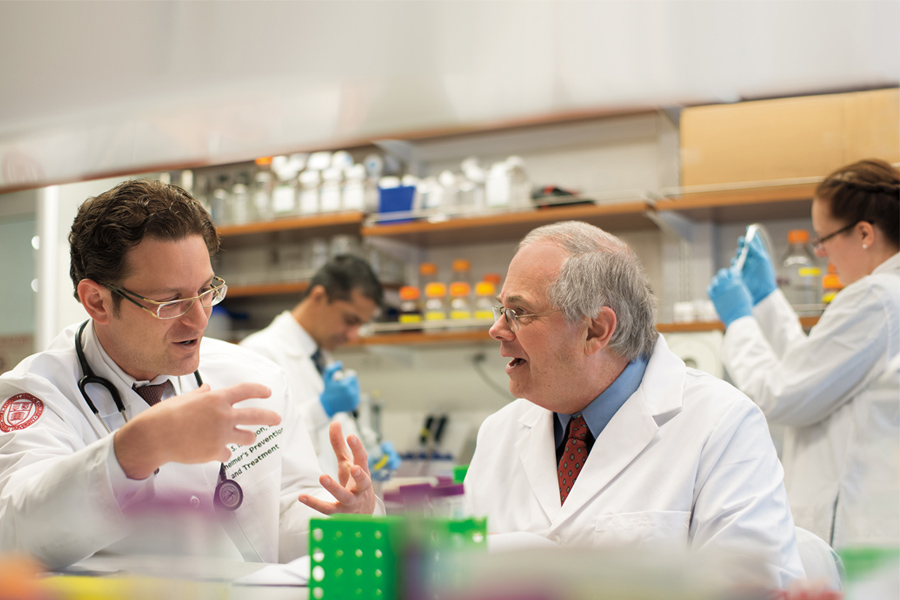
Originally published in the May 2015 issue of Milestones.
In the bustling New York City campus of Weill Cornell Medical College, the Belfer Research Building towers on 69th Street, a bright and modern monument to an energized commitment for research at the institution. Its opening was an incredible accomplishment, made possible by numerous dedicated donors and the thoughtful planning and execution of the Medical College and University leadership. All of these individuals share a vision of brilliant physician-scientists working side-by-side to make groundbreaking medical discoveries that translate into better treatments, and even cures, for patients.
Now, one year after the doors have opened, the energy pulsating through the walls is as unmistakable as the talent of the researchers within them. The scientists, many of them newly recruited thought-leaders, collaborate regularly with clinicians to address some of our most pressing medical dilemmas. Each laboratory, office and conference space was created with collaboration in mind, and patients are already well on the way to reaping the benefits of this translational work.
At the ribbon-cutting ceremony in January of 2014, the Belfer Research Building consisted of many state-of-the-art laboratories awaiting fulfillment – and it was anticipated that several floors would remain unoccupied for the near future. Today, almost all of the laboratories are in use by top-tier researchers, and due to a high demand for residence in the building and the generosity of donors, all remaining unoccupied floors have plans in place for occupation.
The 18-story building has 13 lab floors, each with 21,000 square feet of dedicated research space. To date, in these laboratories and offices, 55 individual investigators and more than 300 junior scientists work together daily toward resolving today’s most critical health concerns. The building now houses the Joan and Sanford I. Weill Center for Metabolic Health, the Sandra and Edward Meyer Cancer Center, the Helen and Robert Appel Alzheimer’s Disease Research Institute, the Feil Family Brain and Mind Research Institute, the Gale and Ira Drukier Institute for Children’s Health, the Jill Roberts Institute for Research in Inflammatory Bowel Disease, the Dalio Institute of Cardiovascular Imaging, the Tri-Institutional Therapeutics Discovery Institute and more. These multidisciplinary research powerhouses exist thanks, in part, to the generosity of the donors for which they’re named, and the collaboration between these institutes and their clinical counterparts will spark innovations in research and patient care. Additionally, the fourth floor of the building is occupied by Hunter College faculty working in the sciences. The building also features The Starr Foundation-Maurice R. Greenberg Conference Center and Terrace, which spans the second and third floors.
“Current Weill Cornell faculty and new recruits are engaged in some of the most cutting-edge research taking place at a medical school anywhere in the country,” says Laurie H. Glimcher, M.D., the Stephen and Suzanne Weiss Dean. “We have come so far in such a short period of time, and we still have a great deal left to accomplish. I can’t wait to see what the future holds.”
Click here to learn about some of the newest recruits to the Belfer Research Building.
